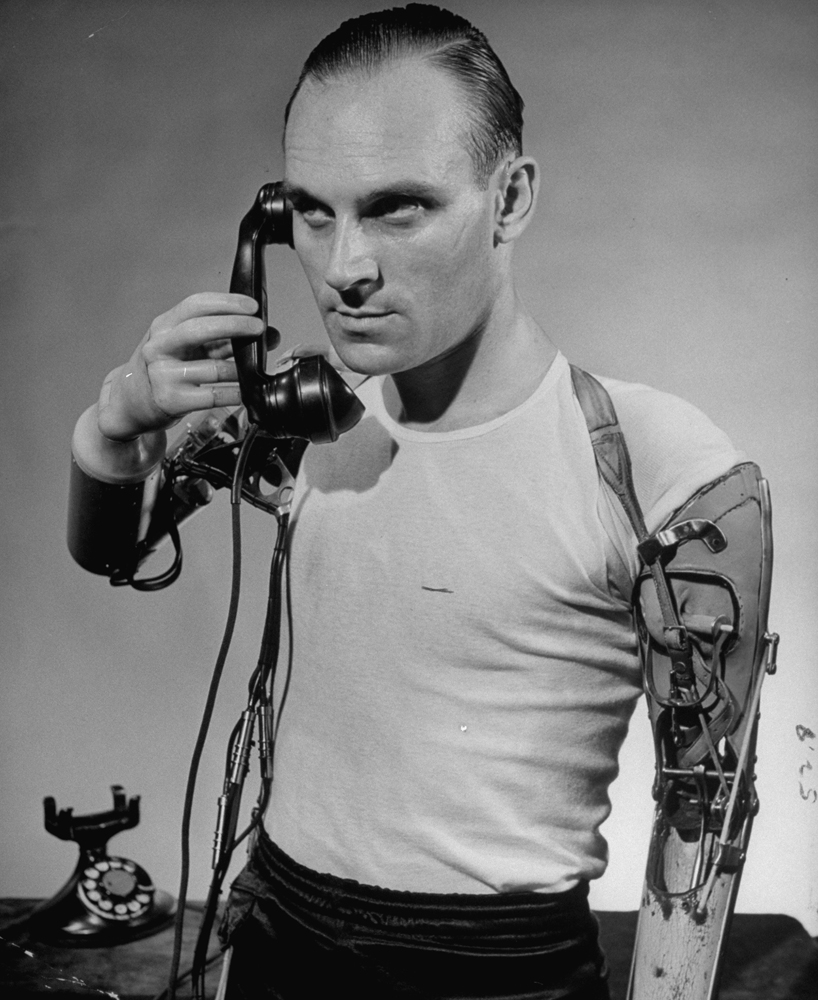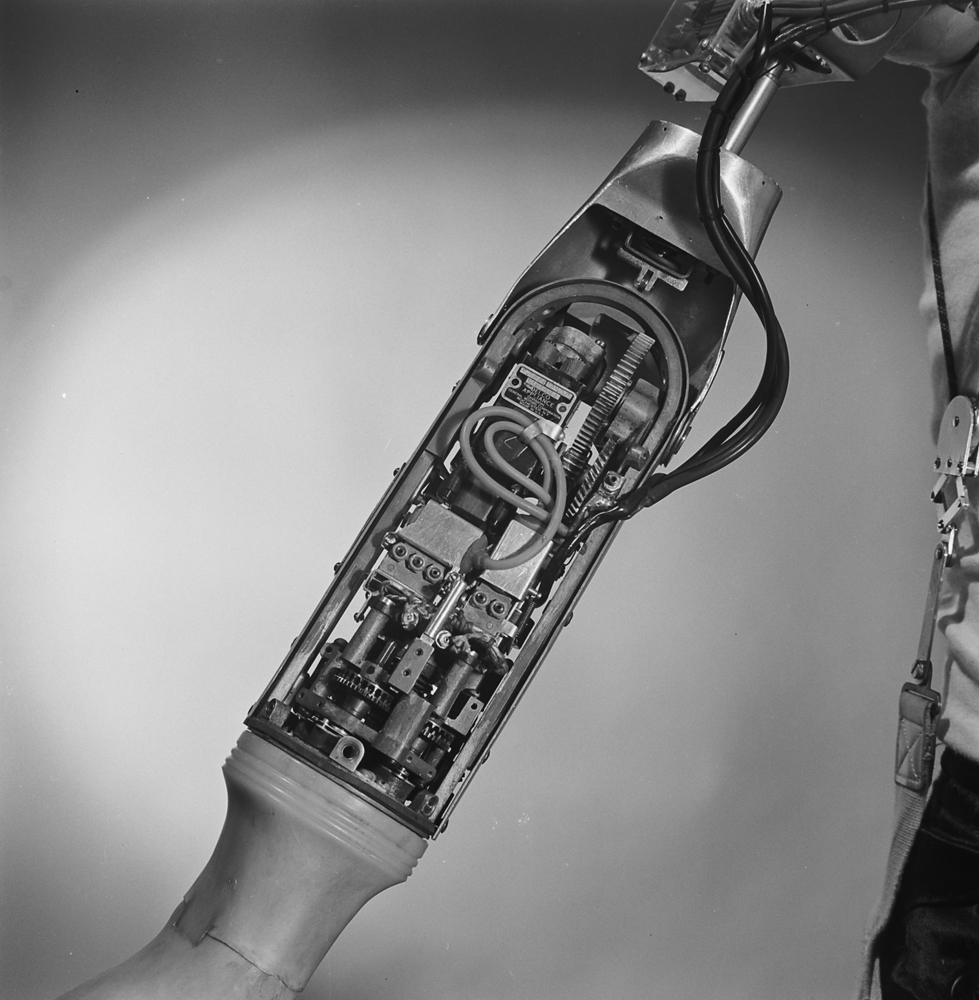
Among the life-changing technical marvels that emerged in the post-World War II era, one in particular—a battery-powered artificial limb, invented by an IBM engineer named S. W. Alderson—was especially promising for veterans who had been severely wounded during the conflict, as well as civilian amputees who lost limbs to disease or peacetime accidents.
LIFE magazine reported in August 1950 on the device, worn here by an unidentified man. Earlier prosthetics were often bulky, and didn’t provide a full range of natural motion. For the first time, engineers partnered with surgeons and physicians to create a new type of prosthetic. This artificial arm and hand ran on battery power, and was controlled by switches operated by the wearer’s foot.
“By exerting greater or less force,” LIFE wrote, “the wearer can send any of twelve distinct signals to the arm.” For example, pressure of the big toe flexed the elbow. All the while, the device was slim enough to be comfortably hidden by a suit jacket. But perhaps most importantly, amputees could perform daily tasks, like picking up a telephone, turning a door handle or lighting a cigarette (below), with relative ease, and with precision.

Delia Mandia is a native New Yorker and NYU undergraduate student whose passion is her global nonprofit organization, Night Night Monster. She also enjoys competitive gaming (she is world-ranked) on her custom-built, hydro-cooled PC, and attending Stargate conventions.


More Must-Reads From TIME
- The 100 Most Influential People of 2024
- The Revolution of Yulia Navalnaya
- 6 Compliments That Land Every Time
- What's the Deal With the Bitcoin Halving?
- If You're Dating Right Now , You're Brave: Column
- The AI That Could Heal a Divided Internet
- Fallout Is a Brilliant Model for the Future of Video Game Adaptations
- Want Weekly Recs on What to Watch, Read, and More? Sign Up for Worth Your Time
Contact us at letters@time.com